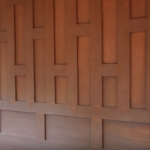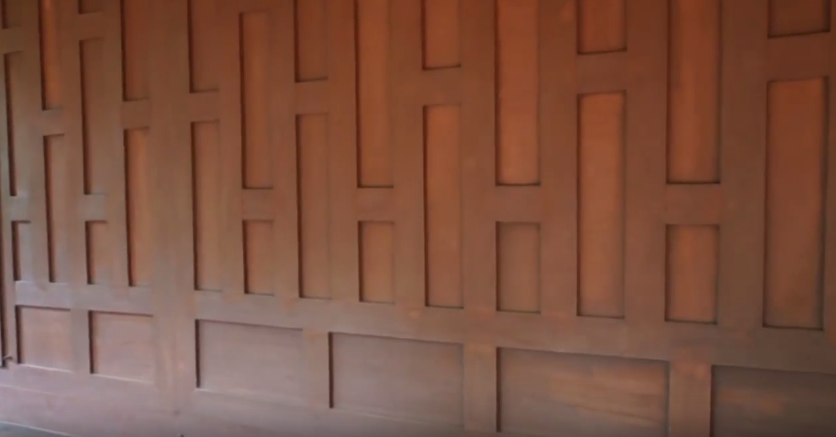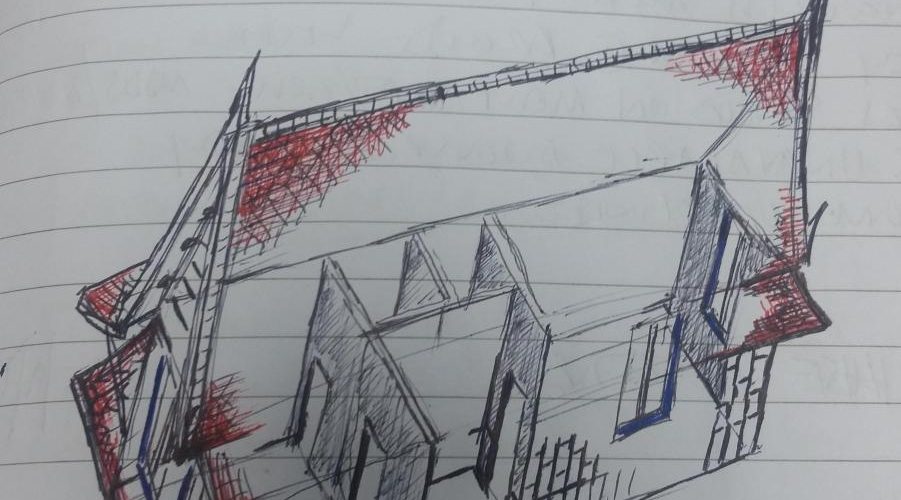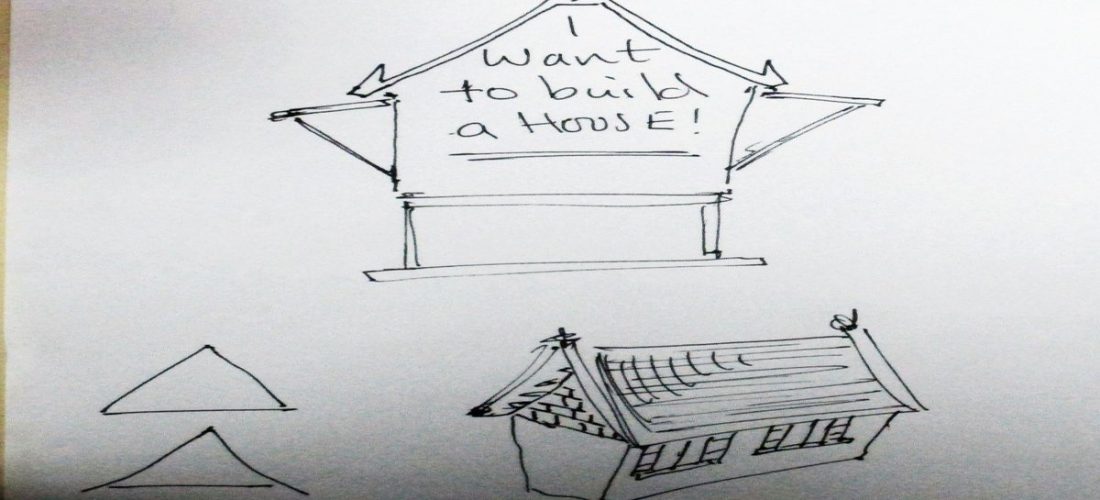So, how different is it, really? C’mon… you want to build a house. You have, or can get, land. Should be straightforward, right?
Well…let’s see. One of the countries IS fairly straightforward, but which one?
| United Kingdom | Thailand |
| Land | |
| Finding land for building is difficult. The UK is crowded. There is high demand for building plots. Land has to be allocated as ‘building land – you cannot just build a house anywhere. Building land is expensive. Part of the high price is down to the market being whipped up by estate agents and owners, plus the classic supply-and-demand. | Finding land is considerably easier especially out of the towns and cities. Crowding is actually about the same – both countries have around 65M people. The demand for building land comes from developers or foreign expats who want to build a house. In general, any land can become building land. The cost is 5-10 times cheaper to buy land to build. The estate agent concept is limited to conurbations. In rural Thailand, you are more likely to find land by word-of-mouth. |
| Plans | |
| You will need the services of an architect. He will produce the plans for you – a complete set including everything needed to make the submission. Depending on his workload this might take a lot longer than you had envisaged. Also, architects like to charge a percentage of the house value as their fee, which can end up running up a bill of £000’s. If you try to do the whole submission yourself it will almost certainly get rejected, adding more time to your project until you can amend and re-submit. | You can sketch out your idea yourself, or use an off-the-shelf drawing program which will create plans. You will need Certified Engineer or Architect to carry out the calculations for your build, and to add the Thai language annotation. If you employ a good professional here, he will make sure the plans get approved, making any changes if requested, and re-submitting. Cost for this at the time of writing, can vary between 30,000THB and 60,000 THB (approx £700 – £1500). There are pre-calculated and approved plans available in Thailand which speed up the whole process still further. |
| Planning Permission | |
| Once the plans are ready, you get an application for from the Local Authority. Fill out the form, attach it to your planning submission and pay the fee. The fee is non-refundable in the event that your plans are rejected. Depending on the LA, they will set a timescale of several weeks before they officially respond the decision to permit or reject the development. If your application is refused, you can appeal the decision, but you must have a good reason to do so. Simply being unhappy about the decision is not enough | You, or your Engineer / Architect, physically takes the plans bundle to the OrborTor regional administration office (Local Authority) and presents them to the Resident Engineer. Yes of course, the plans are checked, and the calculations verified. None of this ‘planning permission team only considers applications every 2 or 3 weeks’. The engineer can carry out the checks in a couple of days, then advise the OrBorTor that the plans can be approved. No one else is involved. In the overwhelming majority of cases, the Engineer works WITH you to make sure those plans are acceptable, so there is no need to appeal |
| Ground Survey | |
| The plot will require a survey to determine the bearing capacity of the land, and whether it will support the structure. This can be a simple visual survey or a costly one with equipment and experts involved. This is one area where the requirement is ‘bigged up’ and costs associated with it also rise. Part of this requirement stems from the way houses are built in the UK, with strip foundations, and load-bearing walls forming the house integrity | The building type in Thailand is predominantly the RC frame with non-load-bearing infill walls, no strip foundation is constructed, as in UK. Unless the building is small and single storey, the ground will have to be checked, again for the spot foundation support, or if piling is needed. It is totally possible that the OrBorTor office has a plan of soil types and strengths and can refer to it for your application, so the survey may not even be required |
| Timescale for Planning Permission | |
| The concept. The plans to be drawn following a meeting with the architect. The planning permission to be sought. The appeals process if the plan is rejected. Enquiry. Witnesses. The slow process in the planning department itself. The reality that the LA planning department will almost certainly reject the application All this could amount to 4- 6 MONTHS and even longer if there are objections. You might make a submission 2,3,4 or more times | Coming up with the idea, and sketching it out. Any number of certified engineers to turn your sketches into plans, and present them at the local authority offices. Make any changes based on the recommendations of the LA Engineer and resubmit. Permission and the associated Building Permit are almost always granted All of this can realistically be completed in 1 month IF everyone is available and your sketches are not too complicated. Even with such hold-ups, a 2 month timetable is easily achievable. |
| Objections | |
| These can come from the LA, from neighbours, from any of the services and utilities, from adjacent businesses, the Department of Transport, Civil Aviation Authority, etc etc etc. a large number of ‘interested parties’ can raise objections to the planning proposal. Loss of amenity, loss of view. Dangerous access point, under a flight path, lack of services or Underground services directly in the path of the development, contaminated soil, hostile or jealous potential neighbours. Any or all of the above, and more besides can be put in the way of your development proposal. You can counter some or all of it by liaising with the interested parties, agreeing a revised solution together, producing your own letters of support, but all of this takes time. With many objections, there will be an enquiry and this can really add to the time and costs | There is not really an ‘objection’ process where interested parties can comment on the planning proposal. You are under no obligation to notify anyone of your intentions, apart from the Local Authority. Therefore, this potential minefield does not exist in Thailand. However… …it’s a double–edged sword. Yes, it speeds up your proposal and application. No pesky people causing problems. You get your permission and start building, right? That’s fine, but it’s the same for other ‘developers ‘too. How would you feel if you completed your dream home and six months later a supermarket was built next door? Or a bar/disco? Or a pig farm?! You must ‘keep in’ with the OrBorTor office to learn about such proposals so you can raise a timely concern. |
| Decision | |
| After what seems like a very long time, the ‘decision’ will be issued. In the UK, for small or single dwelling developers, the decision is almost always rejection. The whole system is stacked against a person who wants to build his own house, and in the process, is a nice little earner for those Local authorities – you pay, whether you win or lose, remember?. There are plenty of cases where an individual is denied permission to build an a particular piece of land but later a developer’s scheme on exactly the same piece of land is approved – all the initial ‘objections’ seem to magically melt away. Is it corruption? Back-handers? Possibly, it’s not for me to say but for 100% sure the planning process is more a case of who you know, not what you know. | In Thailand, you are not judged on whether the Engineer thinks you deserve to be allowed to build. The plan is submitted. The plan is checked and considered and usually the plan is approved. That’s it. No dramas. Of course, sometimes ‘big business’ can influence who gets to build in a particular place, usually if they have a direct interest in that building, but it is nowhere near as widespread as in UK. The whole thing is low key. No making you sweat on the outcome. No building up the drama. You get told via a call or even just popping in to the offices of the Engineer. Unlike the UK, Planning control officers do not see themselves as ‘gods’ to be buttered up. No, in Thailand, they are hard-working professionals who want you to succeed. In the UK, those same professionals default position is for you to fail. |
| Appeal / resubmission after revision | |
| There is a well-worn process for appealing the decision if, as is mostly the case, it is rejected. The appeal needs to have some new reason if it has a hope of succeeding. There is more hope with the resubmission route. The initial decision will state the reasons. If they can be addressed, the application can be re-submitted and that has a higher chance of success. It comes down to whether the planning control officers accept that the revisions cancel the reasons for rejection. | Since the overwhelming majority of planning permission submissions in Thailand are granted, the appeal process is virtually non-existent. Even if some revision or addition to the submission is requested, often the Engineer will move forward on the understanding that the item will be corrected. Once again, the planning officers’ work with the applicant to achieve success. |
| UK and Thailand – Granted Permission | |
| Here is where the two countries processes are similar. Assuming you are lucky enough to actually get a decision granted, An approval certificate / Building permit will be issued, detailing the build, the timescale for the commencement of building, etc Once the approval has been confirmed, a Building certificate is issued. Although the process is low-key it is important to retain that Certificate as it confirms the construction is legal. This is very useful when the time comes to sell the house |







